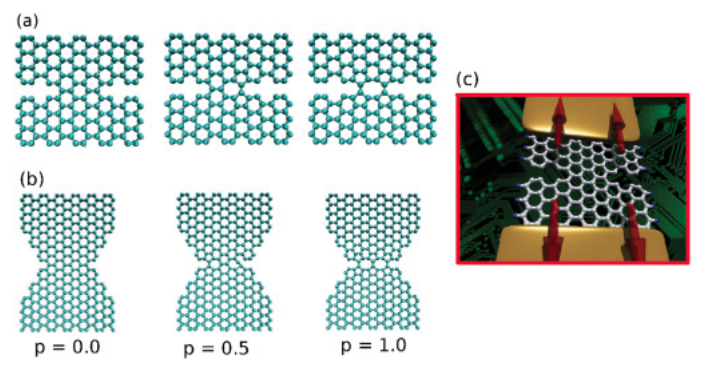We report a theoretical study suggesting a novel type of electronic switching effect, driven by the geometrical reconstruction of nanoscale graphene-based junctions. We considered junction structures which have alternative metastable configurations transformed by rotations of local carbon dimers. The use of external mechanical strain allows a control of the energy barrier heights of the potential profiles and also changes the reaction character from endothermic to exothermic or vice-versa. The reshaping of the atomic details of the junction encode binary electronic ON or OFF states, with ON/OFF transmission ratio that can reach up to 104-105. Our results suggest the possibility to design modern logical switching devices or mechanophore sensors, monitored by mechanical strain and structural rearrangements.

We report a theoretical study suggesting a novel type of electronic switching effect, driven by the geometrical reconstruction of nanoscale graphene-based junctions. We considered junction structures which have alternative metastable configurations transformed by rotations of local carbon dimers. The use of external mechanical strain allows a control of the energy barrier heights of the potential profiles and also changes the reaction character from endothermic to exothermic or vice-versa. The reshaping of the atomic details of the junction encode binary electronic ON or OFF states, with ON/OFF transmission ratio that can reach up to 104-105. Our results suggest the possibility to design modern logical switching devices or mechanophore sensors, monitored by mechanical strain and structural rearrangements.
